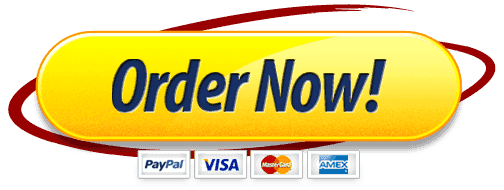- Premium Academic Help From Professionals
- +1 757 528 8682
- support@standardwriter.com
MOD 1 Performance Management Essay Paper
MOD 1 Performance Management Essay Paper
|
Order Number |
45678 94567 |
|
Type of Project |
ESSAY |
|
Writer Level |
PHD VERIFIED |
|
Format |
APA |
|
Academic Sources |
10 |
|
Page Count |
3-12 PAGES |
Instructions/Descriptions
MOD 1 Performance Management Essay Paper
Required Material
Lussier, R. & Hendon, J. Developing and managing: Performance management and appraisal. Retrieved from http://www.sagepub.com/upm-data/45674_8.pdf
Telania (2016). Performance Appraisal vs. Performance Management. Retrieved from https://www.youtube.com/watch?v=XtoznQQ3NO0.
UNCW Dare to Learn Academy (2016). Full Cycle Performance: Employee Empowerment Virtual Workshop (for employees). Retrieved from https://www.youtube.com/watch?v=8gHxEphVZpI. (for SLP 1)
Optional Material
UNCW Dare to Learn Academy (2016). Full Circle Performance: Goal Setting and Calibration (for supervisors and managers). Retrieved from https://www.youtube.com/watch?v=Uyq0B1i_N2s. (for SLP 1).
On-The-Job Training
Required Material
Burroughs, A. (2014). On-the-job training. Smart Business Cleveland, 25(10), 36. Retrieved from the Trident Online Library.
In-job training has broad benefit. (2011, Aug 25). The Daily Post. Retrieved from the Trident Online Library.
IUSoutheast (2009, July 20). HR management: Training & development
. Retrieved from http://www.youtube.com/watch?v=85RVEas4AXs&feature=relmfu
Many employers do not have a plan to manage and transfer knowledge. Because workforce dynamics have changed, there is a greater need than ever for a knowledge-transfer strategy.
Business wisdom is taken from organizations with retirements, resignations, and terminations, leaving companies more likely than not to have less growth capacity and less efficiency, especially in the short run.
In the past, the expectation of passing along knowledge and leaving a legacy was a good fit with the values of long-tenured employees who spent their careers with the same company. But in the modern workplace, where four generations work side by side, knowledge is not always well-filtered throughout an organization.
“As the Baby Boom generation of corporate leaders and experts approaches retirement, businesses in the U.S., Canada, and many European nations face the loss of experience and knowledge on an unprecedented scale,” says Diane Piktialis, Mature Workforce Program Leader at The Conference Board.
“Younger workers can’t be counted on to fill the void, as they lack the experience that builds deep expertise. They also tend to change jobs frequently, taking their technological savvy and any knowledge they’ve gained with them.”
Knowledge does not exist in a vacuum, so it is important to first identify and evaluate what kind of knowledge company executives are interested in capturing and sustaining. Because so much knowledge transfer is cross-generational, from long-tenured to newer employees, an understanding of different learning styles based on generation facilitates the process.
Understanding generational learning preferences and adapting how knowledge is conveyed can make the difference between merely harvesting knowledge and actually using it. Adaptations should be made when the knowledge is specific to the organization and is mission critical, and when the less knowledgeable employee has specific generational learning preferences.
For example, employees entering the workforce may prefer getting Instant Messages (IM) in real time rather than setting a schedule to meet. Gen Y employees may set up blogs to capture knowledge. Firms considering or using knowledge transfer processes should assess their readiness for Instant Messaging, blogs, wikis, RSS feeds, podcasts, and virtual reality. There are many knowledge transfer methods available, including training seminars, formal education, interviews, mentoring, apprenticeships, instant messaging, job transfer, simulations and games, peer assists, communities of practice, storytelling, wikis, blogs, white papers, and conferences. Revised from:
American Management Association. (2017). Effective knowledge transfer can help transform your bottom line. Retrieved from http://www.amanet.org/training/articles/Effective-Knowledge-Transfer-Can-Help-Transform-Your-Bottom-Line.aspx .
Assignment Overview
Steve Trautman is one of America’s leading knowledge experts. View the following four videos to understand the depth of the knowledge-transfer process and follow Mr. Trautman’s widely used knowledge transfer solution.
Pay close attention to the process. Developing your own Knowledge Silo Matrix and discussing what you found will be the basis of your Case 1 assignment.
Trautman, S. (2012, November 30). Introduction to the Steve Trautman Co. 3 step knowledge transfer process
. Retrieved from https://www.youtube.com/watch?v=1xj1iVhu308
Trautman, S. (2013, January 22). 5 questions that drive knowledge transfer
. Retrieved from https://www.youtube.com/watch?feature=player_detailpage&v=IvB_cOo14y8
Trautman, S. (2012, December 19). The Steve Trautman Co. 3-step knowledge transfer solution with knowledge silo matrix demo
. Retrieved from https://www.youtube.com/watch?feature=player_detailpage&v=knN-ZzVAmMY
And finally, pulling it all together:
Trautman, S. (2012, December 18). How it works: The Steve Trautman Co. 3 step knowledge transfer solution
. Retrieved from https://www.youtube.com/watch?feature=player_detailpage&v=tWyMU90x6o4
Case Assignment
- For this Case Assignment you will be completing and analyzing a matrix following the Knowledge Silo Matrix instructions in the third video above. (The team you choose could be a current or past work group, a group of committee members, a group of family members, members of a rock band, or any group where you know the expertise needed and the skill levels of the employees/members.)
You may (a) complete the matrix by hand or (b) use the Knowledge Silo Matrix Word form. Remember these key points:
The Knowledge Silo Matrix (KSM) is a high-level tool of knowledge silos. Think bigger picture. For example, if you were filling out a KSM for building a house, some example silos would be Plumbing, Electrical, Flooring, Insulation, etc. Not “Weld a pipe” or “Test for adequate water pressure.” The blog article, Tip for Better, Faster Knowledge Transfer—It’s Not What People KNOW, It’s What They Know How to DO , provided by The Steve Trautman Co., addresses the important distinction between Knowing vs. Doing. This will help you create a more actionable KSM.
Once you have your matrix completed, then respond to the following questions using the section headings in your paper that are marked in bold below. Utilize at least two sources of outside information from other authors; be sure to cite them and provide a reference list at the end.
- Introduction—This section is often written after you have completed the rest of your paper.
- Work Team Overview—Provide an overview of the work team you have assessed in the Knowledge Silo Matrix. Who are they, how long have they been in the group, and what are their jobs?
- Skill Level in Silo—Discuss each group member’s job in terms of his/her silo status—discussing why you have evaluated them as purple, green, yellow, or white.
- Matrix Analysis—Analyze what the matrix tells you.
- Look at each silo and analyze what you see and what needs to be done to minimize the knowledge risk.
- Look at the colors assigned to each employee (horizontal colors). What should be done next to minimize the risk related to each employee as well as to enhance the performance of the work team? Be sure to discuss the training needed (or not) for each member and what the format of the training should be given what you learn from the matrix.
- Application of the Matrix–Discuss what you have learned from this exercise and the strengths of the Knowledge Silo Matrix approach and the challenges you see managers could face in an organization using the Matrix.
- Conclusion
Submit BOTH your Knowledge Silo Matrix and your discussion covering the points above by the module due date.
Assignment Expectations
Your paper will be evaluated using the criteria as stated in the Case rubric. The following is a review of the rubric criteria:
- Assignment-Driven: Does the paper fully address all aspects of the assignment? Is the assignment addressed accurately and precisely using sound logic? Does the paper meet minimum length requirements?
- Critical Thinking: Does the paper demonstrate graduate-level analysis, in which information derived from multiple sources, expert opinions, and assumptions has been critically evaluated and synthesized in the formulation of a logical set of conclusions? Does the paper address the topic with sufficient depth of discussion and analysis?
- Business Writing: Is the essay logical, well organized and well written? Are the grammar, spelling, and vocabulary appropriate for graduate-level work? Are section headings included? Are paraphrasing and synthesis of concepts the primary means of responding, or is justification/support instead conveyed through excessive use of direct quotations?
- Effective Use of Information: Does the submission demonstrate that the student has read, understood, and can apply the background materials for the module? If required, has the student demonstrated effective research, as evidenced by student’s use of relevant and quality (library?) sources? Do additional sources used provide strong support for conclusions drawn, and do they help in shaping the overall paper?
- Citing Sources: Does the student demonstrate understanding of APA Style of referencing by inclusion of proper citations (for paraphrased text and direct quotations) as appropriate? Have all sources (e.g., references used from the Background page, the assignment readings, and outside research) been included, and are these properly cited? Have all sources cited in the paper been included on the References page?
MOD 1 Performance Management Essay Paper



